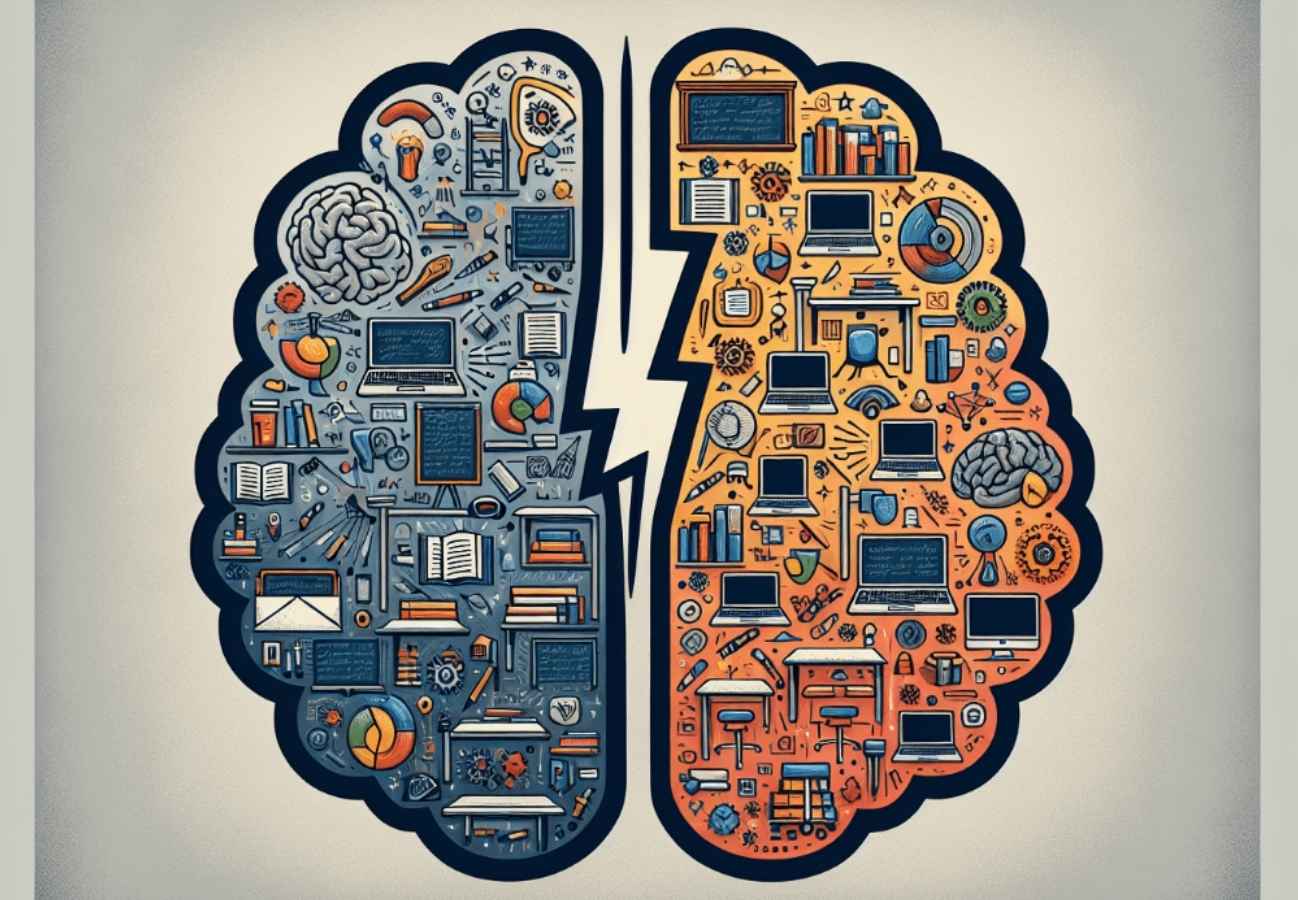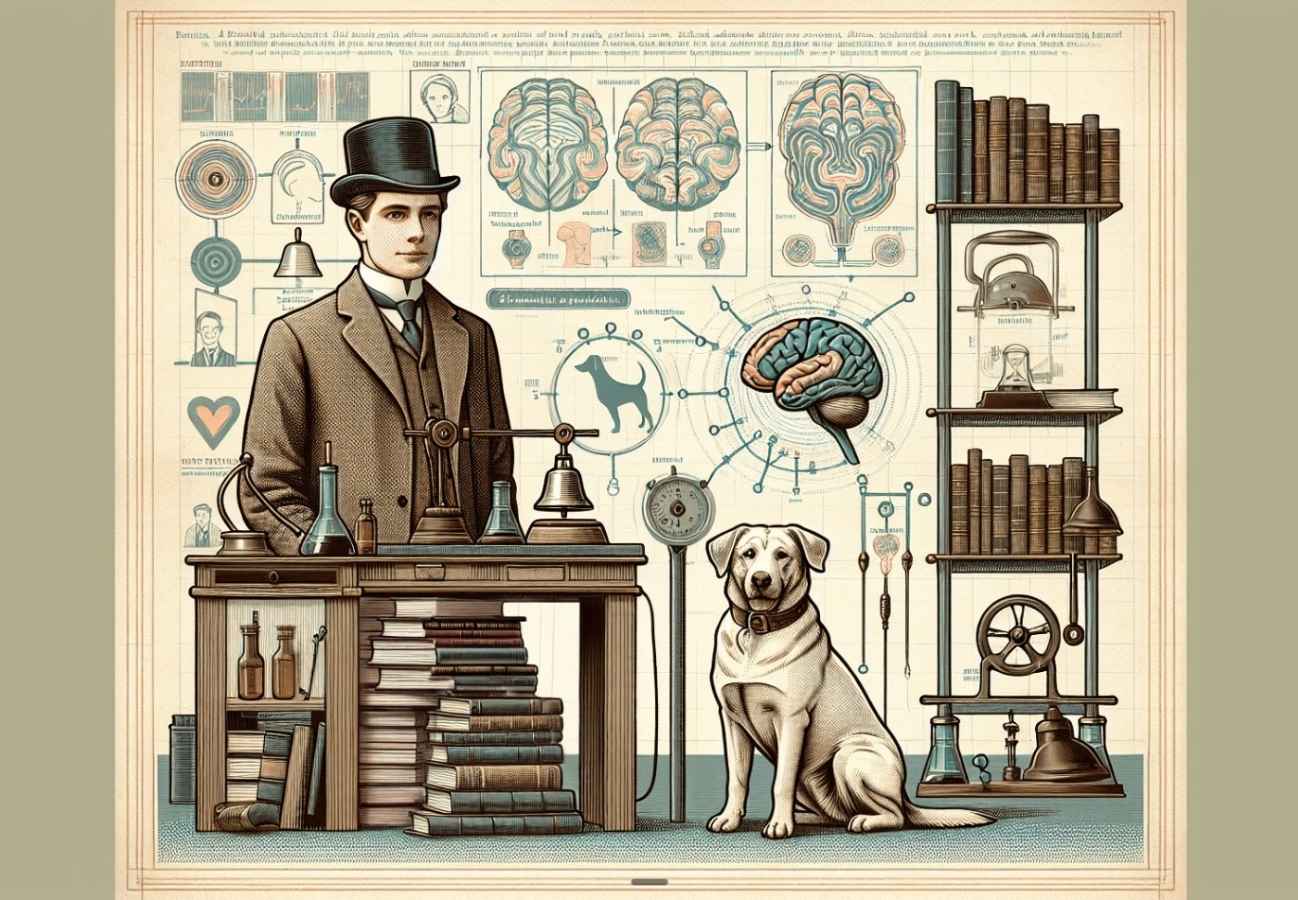Norman Webb changed how educators think about complexity in learning. His Depth of Knowledge framework - often called Webb's DOK - doesn't measure how hard a task is. It measures how deeply students must think to complete it.
Developed in the late 1990s, Webb's DOK has become a cornerstone of standards-based education. It helps teachers design better questions, create more meaningful assessments, and ensure their instruction actually matches what students are expected to learn.
What Is Webb's Depth of Knowledge?
Webb's Depth of Knowledge (DOK) is a framework that categorizes learning tasks based on cognitive complexity - the level of thinking required to complete them. Unlike frameworks focused on difficulty or Bloom-style verb lists, DOK examines what's happening in a student's mind.
A complex multiplication problem with large numbers is still DOK Level 1 if it only requires recall of a procedure. A simple comparison task might be DOK Level 2 if it demands conceptual understanding. The difference isn't about how long the task takes or how many students get it right. It's about the mental demand.
The Four Levels of Webb's Depth of Knowledge
Webb's DOK organizes cognitive demand into four levels. Each level builds on the previous one, but they aren't a hierarchy of value. All four levels matter. Effective teaching moves fluidly across them.
DOK Level 1: Recall and Reproduction
Level 1 tasks require students to recall information, recognize patterns, or follow well-rehearsed procedures. There's a right answer, and the path to it is clear.
This is foundational knowledge: multiplication facts, vocabulary definitions, the steps of the scientific method, identifying countries on a map. Students demonstrate what they know through recognition or reproduction.
Level 1 isn't "bad teaching." It's necessary. You can't analyze a poem if you don't understand the words. You can't solve complex math problems without knowing basic operations. The issue arises when instruction stays at Level 1 when standards or learning goals demand more.
Examples of DOK 1 tasks:
- Define photosynthesis
- List the steps of the water cycle
- Calculate 47 x 23
- Identify the protagonist in a story
- Label parts of a cell
DOK Level 2: Skills and Concepts
Level 2 requires students to make decisions about approach. They must engage concepts, not just recall them. The task has some complexity —- multiple steps, interpretation, or application to a new context.
Students demonstrate understanding by organizing, comparing, summarizing, or explaining relationships. The thinking is still somewhat routine, but it goes beyond memory.
At Level 2, a student isn't just identifying cause and effect - they're explaining how one thing led to another. They're not just solving a problem; they're deciding which strategy to use and why.
Examples of DOK 2 tasks:
- Compare two characters' motivations
- Categorize animals by their adaptations
- Explain why a historical event occurred
- Use context clues to determine word meaning
- Estimate the solution before calculating
DOK Level 3: Strategic Thinking
Level 3 is where real cognitive complexity begins. Students must reason, plan, construct arguments, and support conclusions with evidence. Tasks are non-routine. There's not one obvious path to the answer.
At this level, students analyze relationships among ideas, evaluate the quality of evidence, or develop logical arguments. They explain their reasoning and justify their choices. The work requires abstract thinking and often draws on multiple sources or concepts.
Level 3 tasks demand sustained mental effort. Students can't just apply a formula or follow a template - they must think strategically about the problem and their approach to it.
Examples of DOK 3 tasks:
- Analyze how setting influences character development
- Construct a scientific explanation using evidence
- Develop a logical argument with supporting claims
- Compare multiple historical perspectives on an event
- Solve a novel problem that requires combining concepts
DOK Level 4: Extended Thinking
Level 4 represents the highest cognitive demand in Webb's framework. These tasks require investigation, synthesis, and original creation over an extended period. Students connect ideas across disciplines, conduct research, and produce something new.
Extended thinking isn't just longer thinking. It involves planning, researching, creating, and often revising. Real-world applications are common. Students might design experiments, develop solutions to community problems, or create comprehensive arguments that synthesize multiple perspectives.
Level 4 work can't be completed in a single class period. It requires time, iteration, and often collaboration. The outcome is original - not a reproduction of what was taught, but something the student has constructed.
Examples of DOK 4 tasks:
- Design and conduct a scientific investigation
- Write a researched argument on a complex social issue
- Develop a solution to a real community problem
- Create a multimedia project synthesizing multiple texts
- Propose and test a new mathematical model
How Webb's DOK Differs from Bloom's Taxonomy
Educators often confuse Webb's DOK with Bloom's Taxonomy, but they serve different purposes and answer different questions.
Bloom's Taxonomy categorizes types of cognitive processes: remember, understand, apply, analyze, evaluate, create. It's a framework for thinking about thinking.
Webb's DOK examines depth - the complexity of cognitive demand in a specific task. It's about alignment between standards, instruction, and assessment.
Here's the key difference: Bloom's verbs can appear at different DOK levels depending on context.
"Analyze" could be DOK 2 if it's a routine analytical task with a clear structure. It could be DOK 3 if it requires complex reasoning and original synthesis. The verb alone doesn't determine depth.
This is why DOK is particularly useful for curriculum alignment. It forces educators to look beyond verbs and examine what students actually have to do cognitively to complete the work.
Both frameworks matter. Bloom helps us think about instructional goals. Webb helps us ensure those goals show up in what we actually ask students to do.
Learn more on Bloom's Taxonomy
Review a sample list of Bloom's Verbs
Using Webb's DOK in the Classroom
The real value of DOK emerges when teachers use it as a planning and reflection tool — not a rigid categorization system.
Designing Questions Across DOK Levels
Effective lessons include questions and tasks from multiple DOK levels, strategically sequenced to build understanding.
A history lesson might begin with Level 1 questions to establish facts: When did the Civil War begin? Who was president? Then move to Level 2: How did economic differences between North and South contribute to conflict? Progress to Level 3: Analyze how different stakeholders viewed states' rights. What evidence supports each perspective? And potentially extend to Level 4: Research how regional economic systems shaped political ideology, and connect to modern debates about federal power.
This progression honors how learning actually works. Students need foundational knowledge before they can think complexly about it. But instruction shouldn't stop at foundation — it should build toward deeper thinking.
Assessment That Matches Cognitive Demand
One of Webb's original concerns was misalignment between standards and assessments. A standard might call for analysis, but the test only measures recall.
DOK helps educators create balanced assessments that actually measure what matters. This doesn't mean every test needs equal parts of each level. It means intentionally designing assessments that match the cognitive demand of your learning goals.
If your objective is DOK 3 - students will analyze character development — your assessment should require analysis, not just identification of plot events.
Performance-based assessments, open-ended questions, and authentic tasks naturally reach higher DOK levels. But even selected-response items can be designed to require deeper thinking when crafted carefully.
Avoiding the "Higher Is Always Better" Trap
Here's a critical point: higher DOK levels aren't automatically better than lower ones. Each level serves a purpose.
Students need DOK 1 knowledge. Fluency with basic facts and procedures frees up cognitive resources for complex thinking. You can't analyze historical trends if you don't know basic dates and events. You can't construct mathematical arguments if you're still struggling with computation.
The goal isn't to eliminate Level 1. It's to ensure instruction doesn't stay there when learning goals demand more depth.
Effective teaching intentionally moves across levels based on learning objectives, student needs, and content demands.
Webb's DOK Across Subject Areas
DOK applies to all disciplines, but implementation looks different depending on content.
Mathematics and Depth of Knowledge
Math naturally progresses through DOK levels from computation to complex problem-solving and modeling.
DOK 1 includes basic arithmetic, applying formulas, and using standard algorithms. DOK 2 involves multi-step problems and deciding which strategy to use. DOK 3 requires justifying mathematical reasoning and solving non-routine problems. DOK 4 encompasses mathematical modeling, designing investigations, and connecting math to real-world applications.
The challenge in math is recognizing that difficulty doesn't equal depth. A complex calculation is still Level 1 if it's procedural. A simple-looking problem might be Level 3 if it requires strategic thinking about approach.
Language Arts and Cognitive Complexity
Reading and writing instruction benefits significantly from DOK progression. Students move from basic comprehension through analysis to interpretation and creative expression.
DOK 1 includes identifying main ideas, recalling details, and recognizing literary elements. DOK 2 involves summarizing, making inferences, and explaining relationships. DOK 3 requires analyzing author's craft, evaluating arguments, and developing interpretations with evidence. DOK 4 encompasses synthesizing multiple texts, conducting literary research, and creating original arguments.
The DOK framework helps literacy teachers balance skills instruction with deeper reading and writing — avoiding the trap of focusing solely on strategies without ever reaching meaningful interpretation.
Science and Social Studies Applications
Content-heavy subjects like science and social studies use DOK to balance factual knowledge with inquiry and critical thinking.
Students need to know the parts of a cell, historical dates, or scientific vocabulary (DOK 1). But they also need to explain processes, compare perspectives, and analyze cause and effect (DOK 2–3). And ideally, they conduct investigations and develop evidence-based arguments (DOK 4).
DOK helps content-area teachers avoid teaching-to-the-test patterns where everything becomes vocabulary and dates. It creates space for investigation, analysis, and real-world application without abandoning necessary foundational knowledge.
Common Misconceptions About Webb's DOK
Several persistent misunderstandings limit effective DOK implementation.
1. DOK levels correspond to grade levels or ability.
Reality: All students at all grade levels should experience all DOK levels. A kindergartner can engage in DOK 3 thinking when analyzing patterns or explaining reasoning. A high school student still needs DOK 1 knowledge of historical facts.
DOK is about cognitive demand of tasks, not student capability. Assuming only "advanced" students can handle higher DOK levels becomes a self-fulfilling prophecy that limits opportunities for all learners.
2. Harder means deeper.
Reality: A 10-digit multiplication problem isn't deeper than a 2-digit one. Both are DOK 1. Complexity of thinking, not difficulty of content, determines DOK level.
This confusion leads teachers to increase difficulty without increasing depth — creating frustration without building cognitive skill.
3. Higher DOK is always better teaching.
Reality: All levels matter. Instruction should match learning goals and build systematically. Jumping to DOK 4 before establishing DOK 1 foundations doesn't accelerate learning — it creates gaps.
Effective teaching is intentional about depth, not dogmatic about always reaching the highest level.
4. DOK is just another verb list.
Reality: The same verb can appear at different DOK levels. "Describe" could be DOK 1 (describe what you saw) or DOK 2 (describe the relationship between variables). Context determines depth, not the verb alone.
Teachers using DOK as a checklist of verbs miss the point entirely.
The DOK Wheel and Other Planning Tools
The DOK wheel is a visual tool that helps teachers quickly identify appropriate verbs and activities for each depth level. The circular diagram organizes action words around each DOK level, making planning more efficient.
While useful for initial learning, the wheel shouldn't become a rigid prescription. The real value of DOK comes from examining tasks holistically: What does the student actually have to do? What thinking is required? Does this match our learning goal?
Planning tools and verb charts support implementation, but understanding the underlying principle — alignment of cognitive demand — matters more than memorizing categories.
Implementing Webb's DOK Schoolwide
Individual teachers can use DOK effectively, but systemic implementation multiplies impact. When schools adopt DOK as a shared framework, alignment improves across grade levels and departments.
Professional learning communities benefit from studying DOK together — analyzing student work, examining assessment items, and planning lessons collaboratively. This shared language helps teams ensure students experience appropriate cognitive challenge consistently.
District-level implementation requires training, ongoing support, and patience. DOK isn't something teachers learn in a one-day workshop and perfectly apply forever. It's a lens for continuous improvement — examining practice, making adjustments, and building expertise over time.
The framework works best when educators see it as a tool for reflection rather than compliance. Use DOK to ask better questions about your teaching, not to rigidly categorize every task.
Who Was Norman Webb?
Norman Webb developed his Depth of Knowledge framework while working as a researcher at the Wisconsin Center for Education Research at the University of Wisconsin-Madison. His background in mathematics education and assessment design shaped the practical, accessible nature of DOK.
Webb's work emerged from alignment studies in the 1990s, examining whether state standards, curriculum materials, and assessments actually measured the same things. Too often, they didn't. Standards aimed high while assessments stayed shallow. Or instruction focused on procedures while tests demanded reasoning.
His framework gave educators a shared language for discussing cognitive complexity and a method for improving alignment. The enduring influence of Webb's DOK reflects its practical utility — it solves real problems teachers face in designing instruction and assessment.
Webb's contributions extend beyond DOK to broader work in assessment design, standards alignment, and mathematics education. But the Depth of Knowledge framework remains his most widely recognized and applied achievement.
Moving Forward with Depth of Knowledge
Start by examining your current practice through the DOK lens. Look at your lesson plans, assessments, and the tasks you give students. What DOK levels do they represent? Do they match your stated learning objectives?
Notice patterns. Many teachers discover their instruction unintentionally stays at Level 1 or 2, even when standards and objectives demand deeper thinking. This isn't a failure — it's an opportunity to make intentional changes.
Collaborate with colleagues. Analyze student work together. Debate the DOK level of different tasks. This collegial examination builds shared understanding and collective expertise.
Remember that implementing DOK well takes time. You don't need to overhaul everything at once. Start with one unit, one assessment, or one set of discussion questions. Make small, intentional changes. Build from there.
The goal isn't perfection. It's alignment — ensuring that what we ask students to do matches what we want them to learn. Webb's Depth of Knowledge gives us a tool for closing that gap, one thoughtful decision at a time.
Summary: Key Takeaways on Webb's Depth of Knowledge
- Webb's DOK measures cognitive complexity, not difficulty
- Four levels: Recall (1), Skills & Concepts (2), Strategic Thinking (3), Extended Thinking (4)
- DOK differs from Bloom's Taxonomy — focuses on depth of tasks, not types of thinking
- All DOK levels matter; higher isn't automatically better
- Effective teaching intentionally progresses across levels
- Common mistake: confusing difficulty with depth
- DOK helps align standards, instruction, and assessment
- Implementation works best as collaborative, ongoing practice









